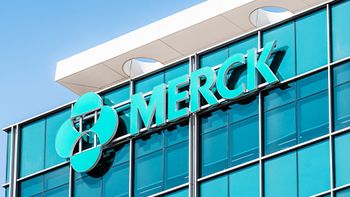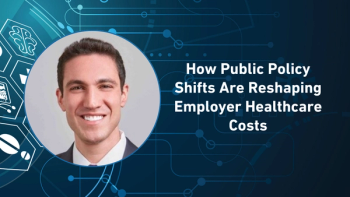
- Pharmaceutical Commerce - January/February 2012
The global distribution perspective
Rapidly rising healthcare-products trade is almost being matched by increased regulatory scrutiny
As one business outlook for the life sciences industry after another point to increased globalization and deeper reach into emerging markets, there is a corresponding transformation occurring among the network of companies that provide distribution and logistics services to that industry. And, just as the biopharma industry is adjusting to a post-blockbuster era by raming up specialty pharmaceutical activities, so is the biopharma logistics industry taking on a new shape—one that emphasizes high-touch services and rapid delivery of small shipments as opposed to bulk deliveries of brandname products.
LOADING AN ENVIROTAINER AT AA CARGO
Balanced against these business-growth trends are a increasingly complex array of regulatory issues; supply chain regulation in life sciences is almost a growth industry of its own. Consider the Transportation Security Administration’s cargo-security program: Having adjusted, in the 2009-2010 period to making a choice between having packages opened at airports versus gaining validation as a Certified Cargo Screening Program (CCSP) facility, pharma shippers now have to contemplate an expansion of that requirement to all cargo from all destinations around the world. FDA has reorganized its Office of Compliance Investigations, with a view toward increased scrutiny of biopharma products and ingredients. Most regulators around the world, including FDA, are trying to look more closely at the growth of online pharmacies and shipments, which are a worry for biopharma manufacturers themselves as counterfeit products move across borders.
From a purely logistics-industry perspective, healthcare is one of the rare sectors where growth continues to be strong, even as the world economy tiptoes along the edge of another downturn, brought on by sovereign indebtedness—especially in Europe—and economic uncertainty. Even China, the powerhouse of economic growth for the past decade and longer, is now looking at economic stimulus programs to keep its economy running smoothly. With that cloudy outlook, life sciences look all the more tantalizing to logistics providers. According to Armstrong & Associates, a Stoughton, WI, consultancy, it took the US logistics industry three years to climb out of the hole created during the 2008 downturn, when revenues dropped 16% to $107 billion, and while biopharma products are a small fraction of overall trade, their growth helped spur that recovery. Logistics providers are responding to the opportunity with a flurry of expansions and acquisitions; 2011 saw broad growth in investments:
• UPS Healthcare Logistics opened its 30th dedicated warehouse and processing center (in Brazil), and at the end of the year, announced the acquisition of Pieffe, a Milan-based biopharma distributor.
• DHL, said to be the largest healthcare-products distributor in the world, added Eurodifarm, a temperature-controlled distributor in Italy, to its Supply Chain Solutions unit, and built a new Competency Center in Vienna for life sciences products for its Global Forwarding unit. The DHL Freight unit added an Active Tracking System (a near real-time data service) to its European network.
• MD Logistics (Plainfield, IN) opened a new distribution center in Reno, NV, and deepened its relationship with SEKO Worldwide, itself experiencing a growth spurt in healthcare products transportation.
• Marken (London) an express delivery company dedicated to life sciences, particularly clinical trials supply chains, opened new centers in Singapore, Mexico City and Buenos Aires; it also began providing a new, Web-based tracking and document-delivery service, Marken Solo.
• Exel (Westerville, OH; the company is a subsidiary of DHL) acquired a distribution center of Bristol Myers Squibb, and agreed to build a new facility in Mechanicsburg, PA, to handle that company as well as others for life sciences product storage and shipping.
• DDN (Menomenee Falls, WI) added 150,000 sq. ft of temperature-controlled capacity to its Memphis facility.
• LifeScience Logistics (DFW Airport, TX) leased a new facility in Union City, GA (near Atlanta and its international airport), adding 225,000 sq. ft of temperature-controlled space. Press accounts implied that part of the rationale for this was a new manufacturing facility of Dendreon, the Seattle, WA, commercializer of anti-cancer “vaccines” that are targeted at prostate cancer.
• DB Schenker (Berlin) added three more direct air routes coming from Europe to four more locations in North America: Atlanta, Houston, Toronto and Chicago. The company’s air freight services include many used by life sciences companies.
• FedEx went public with a Healthcare Solutions business unit, which will draw on the various FedEx operating units (Express, Ground, Custom Critical) to provide global “closed loop” services (meaning that FedEx assets are employed throughout most shipments).
Meanwhile, the Big Three wholesalers are not sitting on their hands watching all this logistics service activity going on around it. Just over a year ago, Cardinal Health acquired Zuelig Pharma China, a billion-dollar distributor there known locally as Yong Yu; and this year made a couple acquisitions in Canada. To varying degrees, McKesson and AmerisourceBergen have made acquisitions here and abroad as well.
Many of these businesses are chasing the temperature-controlled pharmaceuticals market; Pharmaceutical Commerce’s annual Cold Chain Sourcebook publication pegged annual growth of these products at roughly 8% per year (noncompounded), nearly double the 4-5% growth predicted for pharmaceutical products overall. (Pharmaceutical Commerce, May/June, p. 1). While the actual volume of refrigerated (2-8 °C) products is small, the need for services is considerably magnified: Evolving regulations require temperature monitoring, and documenting the transit of the shipment in some cases; containers need to be serviced when they contain refrigerants or battery power; and the deliveries have a precise time budget for getting from Point A to Point B, which doesn’t fit well with conventional package delivery. Lurking behind the refrigerated requirements are new ones for “controlled room temperature” delivery—which is translating into keeping the temperature range of a shipment between roughly 15 and 25 °C, through the use of packaging or thermal blankets covering pallets.
FDA steps up scrutiny
Mention of the evolving cold chain protocols is just one of a variety of supply-chain integrity issues that FDA is grappling with. It has reorganized its Office of Compliance to focus specifically on supply chain issues (Fig. 1) and, with prodding from Congress, has activated its PREDICT program to rapidly evaluate imported products, on a risk basis, for closer inspection.
Last summer, it released a document, “Pathway to Global Product Safety and Quality,” outlining its intentions to deal with the intensified global structure of the pharma industry.
1) FDA, in close partnership with its foreign counterparts, will assemble global coalitions of regulators dedicated to building and strengthening the product safety net around the world.
2) With these coalitions, FDA intends to develop a global data information system and network in which regulators worldwide can regularly and proactively sharereal-time information and resources across markets.
3) FDA will continue to expand its capabilities in intelligence gathering and use, with an increased focus on risk analytics and thoroughly modernized IT capabilities.
4) FDA will effectively allocate agency resources based on risk, leveraging the combined efforts of government, industry and public- and private-sector third parties.
One of the compliance issues woven into the Pathway document is “economically motivated adulteration” (EMA)—which came into prominence with the heparin scandal of 2008. The Government Acccountability Office (GAO) issued a report in November on its assessment of FDA activity in this area, finding mostly that FDA should be doing a better job of coordinating enforcement activity among the various FDA divisions, each of which is tackling EMA in its own fashion.
In reponse, Health and Human Services (of which FDA is a part) responded, noting that the Center for Drug Evaluation and Research (CDER) has already developed a model “to rank the 1,387 active pharmaceutical ingredients known to be in current use according to their susceptibility to edonomic adulteration,” and further, is already at work with US Pharmacopeia to upgrade the quality tests USP specifies to identify impurities in 20 tests that lack current technology capabilities.
GAO also recommended that FDA adopt a definition of EMA (if you stop to think about it, EMA could result in different quality problems, at different target products, than “conventional” GMP miscues)—and FDA quickly responded that the working definition has already been written:
“The fraudulent intentional substitution or addition of a substance in a producdt for the purpose of increasing the apparent value of the product or reducing the cost of its production, i.e., for economic gain. EMA includes diltion of products with increased quantities of an already-present substance . . . to the extent that such dilution poses a known or possible health risk to consumers, as well as the addition or substitution of substances in order to mask dilution.”
A third direction of FDA focus—one that has been hanging for years in a semi-active, semi-dormant phase—is item serialization of finished products, and a track-and-trace system to monitor supply chain activity. Logistics providers in the form of wholesaler/distributors are centrally concerned with this; and there is already precedent that 3PLs will have to take on the same responsibilities as manufacturers (for whom they are an agent) to collect, store and transmit product tracking data. Track-and-trace legislation remains in various Congressional committees, and might be incorporated into the PDUFA legislation that will be taken up this year. In the meantime, many manufacturers and other supply chain participants are watching the countdown to the California e-pedigree law, which is scheduled to go into effect (barring a federal pre-emption of the state legislation, or some other delay) beginning in 2015.
It is interesting to note that there are industry efforts that parallel those of FDA, notably the Rx-360 program, which seeks to pool industry auditing processes so that approved contract manufacturers and others can be vetted more easily and frequently (see Editorial, p. 3). Like FDA’s plan to share inspection data among national regulatory agencies, industry members of Rx-360 would share audit results of their own inspections; and like FDA’s new emphasis on supply chain integrity, Rx-360 is now focusing on supply chain security issues.
All these issues represent a tough challenge for manufacturers to meet—and they tend not to be potential revenue-generating activities, but instead ones that add to the regulatory burden the industry carries. Outsouring logistics processes to specialist firms make all the more sense in this scenario. As one manufacturer interviewee told Exel (in a white paper Exel published, “The tide has turned: Why do life sciences manufacturers now prefer outsourcing?”), “We have 40 people in logistics. They have 40,000.” Why not leverage that concentration of expertise? PC
Articles in this issue
almost 14 years ago
Manufacturers are reviving their serialization plansalmost 14 years ago
HDMA updates its barcode guidance for wholesaler membersalmost 14 years ago
UPS Healthcare Logistics adds to network with an Italian acquisitionalmost 14 years ago
Gartner 2011 Healthcare Supply Chain Top 25 puts Cardinal Health at No. 1Newsletter
Stay ahead in the life sciences industry with Pharmaceutical Commerce, the latest news, trends, and strategies in drug distribution, commercialization, and market access.



